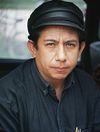Wechua general election, 1673
| ||||||||||||||||||||||||||||||||||||||||||||||||||||||||||||||||
| ||||||||||||||||||||||||||||||||||||||||||||||||||||||||||||||||
| ||||||||||||||||||||||||||||||||||||||||||||||||||||||||||||||||
The Wechua general election in 1973 was the first general election in the Wechua Nation after the return of the Sapa Wechua Manco Cápac and the restoration of order and governance over the Wechua Nation.
This is the 3rd general election held in the Wechua Nation under the Wechua Constitution of 1663, held for all 301 Royal Councillors in the Council of the Wechua Nation. The election was held over three days from 1.XI.1673 to 4.XI.1673, administered by the Wechua National Council for Elections (WNCE). This was the first election administered by this body, composed of representatives of all the registered and legal political parties and interest clubs as well as lawyers, former politicians, political philosophers, psychologists, and historians. The WNCE created an official national roll of voters by digitizing and using all the surviving records from the First Wechua Kingdom. It conducted a large campaign for six months prior to the election to register as many voters living in the newly restored Wechua Nation, hiring unemployed citizens to survey and canvass the entire country.
This general election is also the first time that political parties could officially register. A ban on political parties and factions participating in elections was lifted as part of the reforms enacted by Manco Cápac during the Restoration.
The election saw the Social Democratic Club win a large majority on a national turnout of 71%. As a result, Vicaquirao Alvarez became the Inkap Rantin, or Prime Minister, of the Wechua Nation.
Overview
Reconstruction, the economy, and structural government reforms were hotly debated issues in the election. Alvarez and the Social Democrats supported a comprehensive reconstruction plan and a massive economic stimulus plan to supercharge the Wechua economy. Alvarez focused on economic self-sufficiency and partnering with the Raspur Pact economies to secure loans for reconstruction. The Conservatives focused on self-sufficiency as well, however, they abhorred the idea of seeking loans from allies and instead wanted to privatize all government corporations and seek public-private partnerships in all reconstruction projects.
The Wechua economy had been in a depression at the time of the 1673 election. Normally, this would have hurt the incumbent Inkap Rantin, who was Vicaquirao Alvarez, appointed by the Sapa Wechua after the collapse of the Wechua Nation and the subsequent flight to Nivardom, Constancia. However, Alvarez's work to bring the party closer to the political center aided greatly, along with massive Raspur Pact investment in the country after the Restoration.
Campaign
Under the leadership of Alvarez, the Social Democratic Club had adopted a more centrist policy platform than the Club historically maintained. This was seen as moving away from the traditionally more left-wing stance of the Club. The Social Democratic Club made several campaign pledges such as the creation of a National Minimum Wage, huge investments in infrastructure, education, technology, and health care, and promised greater economic competence.
The Social Democratic Club campaign was ultimately a success; the party returned an unprecedented 189 Royal Councillors and began the first term of a Social Democratic Club-led government.
The Conservative and Royalist Coalition was led by Urma Allcca Asto and ran their campaign emphasizing a national plan for reconstruction focus heavily on public-private partnerships. The single focus led many to think that the plan was short on details and lacked ambition.
The Alexandrian and Caputian Party, under Julia Noir, returned 26 Royal Councillors. The National & Humanist Union, a strong extension of the international Nationalist and Humanist Party network, returned 19 Royal Councillors. The Communists came last with 5 seats, centered around the city of Apurimaq and some of its rural environs.




